Rules, O-Kei: Honey, I shrunk the modern car!
07 February 2023
(Part 3: 1968-present)
By the end of the ‘sixties, a horsepower war was taking place in the Kei car market – and it was one that old-stager, the Subaru 360, couldn’t win. Honda’s N360, launched in 1967, was pulling away, attracting customers and critical acclaim in a manner the old car, introduced in the final year of the otherwise unrelated Fuji Cabin 5A, couldn’t hope to match.
It wasn’t just Honda, either: the Mazda R360 and Carol had arrived in the early ‘sixties, alongside Mitsubishi’s Minica and various Daihatsu offerings.
The world was moving on, and so had Subaru: its 1000 small car, built to different Ministry of International Trade and Industry (MITI) specifications, had gone on sale in 1966. Two years later, the Subaru 360 Young and Young SS arrived to counter the N360, with the latter boasting 35hp from an extensively modified engine.
Despite sportier trim, and an indent for a surfboard in the roof, the uprated 360s, otherwise with a 25bhp engine in standard trim, couldn’t stem the tide. Attempts to export the car had met with various forms of disaster: the 1962 Subaru 450, so named for its larger engine, sold poorly at home and abroad.
US magazine, Consumer Reports, battered the 360 in 1969 for its performance, handling and crash protection, curtailing the ambitious efforts of importer, Malcolm Bricklin, to undercut the VW Beetle on price, despite similarly self-deprecating advertising (‘Slow and ugly does it’). Anime series, Yoroshiku Mechadock, would later cast the hero in a Rotary-converted 360, such was its lasting effect on the Japanese motoring landscape.
By 1970, the 360 was history, succeeded by the R-2 and Rex, but its legacy remained, kickstarting intense competition between domestic manufacturers as they jockeyed to fill each segment within the confines of Kei car legislation. In the ‘sixties it had been horsepower; by the power-capped ‘nineties, body styles and features fought for every customer by regulated difference, as we shall see.
Sales of Kei cars would peak the same year, but as the ‘seventies wore on, increasing competition from the small car market saw the segment begin to drop off owing to compromises in size, weight and performance. Oncoming emissions legislation, mandated in 1973, made it difficult for manufacturers to meet exhaust laws with two-stroke 360cc engines, which two manufacturers, Daihatsu and Suzuki, were dependent on for their Kei car models.
The industry was in panic, and with few options to explore, makers reduced their Kei car ranges to concentrate on other market sectors. With its Life and Chantez respectfully, wary of hefty losses, Honda and Mazda temporarily withdrew from Kei car manufacture until well into the ‘eighties.
Daihatsu at least had the backing of Toyota, with which it entered into a business partnership in November 1967 to sell larger cars. Suzuki had no such lifeboat to weather the storm, though MITI’s updated regulations, made current for 1 January 1976, now allowed a maximum engine capacity of 550cc and larger bodies, up to 3.2m long and 1.4m wide (10.5ft x 4.6ft) with height still pegged at 2m (6.6ft) to allow for commercial vehicle applications.
Kei cars could finally exceed the length of a Mini, and the larger engine capacities allowed for more power, torque and an easier time meeting emissions. The remaining players had expected a maximum engine capacity of 500cc, and had built so called interim ‘feeler’ engines as test beds.
Two years earlier, on 31 December 1974, Kei cars gained the yellow-and-black plates for which they became known to the present day; before then, they had used smaller versions of the plates used by bigger cars, scaled down to fit the small pressed apertures on their bodywork.
Suzuki did, however, develop and sell the Kei-compliant (and popular) Jimny off-roader in this period; demand for Kei commercial vehicles hadn’t gone away, and Japan’s streets and parking problems were only getting worse. Kei pick-up trucks and vans had reached an attractive size for export, particularly in South America, where their price, size and load carrying capacity were quickly exploited.
Export versions of the Jimny, known as the LJ80, complete with 800cc four-pots, began to be sold abroad, selling well in Australasia and Europe. It was one of the first cars sold by Suzuki in the UK in 1979, an-appropriately liveried example being given to Suzuki works motorbike rider, Barry Sheene.
It wouldn’t be the last Kei-class Suzuki, up-gunned with a larger engine, which achieved success in Europe and the UK, either: its Cervo sports coupe, on sale with the Jimny, received critical acclaim as the SC-100 ‘Whizzkid’, sold with a 970cc four-cylinder engine.
Otherwise, sales gradually (then dramatically) fell away until 1980, when the beginnings of Japan’s ‘bubble economy’ began to benefit the population. Businesses and land began to trade at rates far removed from their maximum value, leading to a surplus of cash like never before. It was into this microcosm that the 550cc Kei car, perhaps inevitably, began a period of intense technical development.
To entice buyers’ deeper pockets, Kei cars became sophisticated like never before; multivalve cylinder heads and all-wheel-drive gradually became the norm on faster models. By 1989, shortly before the Kei rules changed once more, constantly variable transmissions, bespoke interiors, adjustable steering columns, and air-conditioning were common options, with other novelties like rain sensing wipers also available.
What had begun as a horsepower war between Subaru and Honda had now become an all-out assault on the options list; while manufacturers couldn’t go beyond the size and cubic capacity specified by MITI, the last 550cc Kei cars offered all of the features of an executive’s express, albeit at a quarter of the size.
Three cylinders were regarded as the ideal compromise in building cost, torque and power; all apart from Subaru, whose Rex (and certain export Jumbos) stuck resolutely with a twin, relying on a supercharger to take the fight back to the likes of Daihatsu’s Mira and Suzuki’s Alto Works RS.
With the economic bubble still 18 months or so from bursting, Kei cars were allowed to grow yet again in March 1990 – in engine size (660cc) and in length (up to 3.3m). Aware of the incessant jockeying between makers, power output was limited for the first time – to 63hp, prompting a radical assessment of not only equipment levels, but new body styles with which to attract buyers.
Flushed with cash, the ‘ABC sports cars’ – Autozam, Beat, Cappuccino – were birthed by Mazda, Honda and Suzuki, respectively. Bubble economy economics allowed for bespoke bodies and unusual engine layouts, rewarded by the higher prices charged to customers for what was supposed to be Japan’s smallest domestic car class.
63hp, engineers reasoned, was enough to have fun with given the tiny dimensions conferred on the Kei class. Nevertheless, the Autozam AZ-1 looked for all the world like a shrunken supercar, complete with a mid-mounted engine, gullwing doors, and FRP panels mounted to a steel monocoque. Make no mistake, these sports cars were tiny – considerably smaller than a ‘sixties Lotus Elan or MG Midget.
The AZ-1 was a show of sophistication in the Kei market; Mazda, having abandoned the segment in 1976 with its Chantez, quietly returned in 1989, reviving the Carol nameplate as an Autozam.
It wasn’t the first to launch, however; in 1991, deserters Honda, whose Today hatch brought it back into Kei contention six years prior, enlisted Pininfarina to help create its Beat.
A mid-engined roadster with wild zebra skin seats, the Beat used an uprated version of the Today’s triple; cynics later compared its styling to that of the (considerably larger) MGF of 1995.
Suzuki also launched its Cappuccino in 1991; the least conventional of the three, it shared an engine with the AZ-1, and was a conventionally engineered, stiff shelled, front-mid-engined, rear-wheel drive soft top with a wheel at each corner and an ingenious retractable targa top.
As per the Jimny and Cervo, the Cappuccino came to Europe and the UK; this time, however, there was no larger export engine up front. Its tiny size and tempting price put it within the price range of that other great Japanese sports car export, the Mazda MX-5. Alas, just 1500 examples came to the West, with a limited range of colours and a curtailed options list.
The UK ‘grey’ and ‘parallel’ import market took great interest in the ABC sports cars, and were among the first of a flood of Japanese Domestic Market vehicles (along with Eunos Roadsters, the home market Mazda MX-5) brought into challenge cars built for the UK market, whose specification sometimes trailed those of Japan’s.
Daihatsu tried with its Copen in 2002 to reignite the flame of the Kei sports car; alas, it ended up with a 1.3-litre 16 valve engine five years later in order to meet emissions legislation. Even the 660cc sainted four-stroke triple, the saviour of many a Kei car, couldn’t survive outside the shores of Japan.
Few (if any) foreign cars qualified for Kei classification until 2001, when MCC (Smart) released its Smart K, a Kei compliant version of its ForTwo. Its 598cc turbo engine qualified, but its rear wings and tyre width had to be slimmed down. Having sold poorly in Japan, Caterham enjoyed better success with its 7 160, a European entry-level model sold back to Japan as a Kei sports car despite needing thinner wings and tyres in order to wear a yellow licence plate.
Powered by a 658cc triple used across a range of Kei cars, including the Japanese domestic market Suzuki Jimny and various Mazda and Nissan light models, legislators accepted its higher 80hp power output for sale owing to its homologation having taken place in Europe. That the Kei sports car story was carried for so long by a licence-built Lotus played well into the late Colin Chapman’s maxim: ‘just add lightness’.
That Suzuki’s old Cappuccino so closely resembled the original Elan in ways more closely than Mazda’s MX-5 is telling; that said car’s tiny stature on the downhill was a prominent storyline in the drifting/touge anime Initial D: Fourth Stage counted for nothing when the hero’s AE86 Corolla beat his rival’s Cappuccino regardless. A fitting epitaph? Perhaps.
The late motoring journalist, technical writer and musician, LJK Setright, argued that the greatest small cars are not truly small; its ilk continued on sale after 1998 with another small permitted increase in size – now lengths of up to 3.4m (11.2ft) and 1.48m (4.9ft) in width could be specified.
Financial penalties further beset the Kei car segment in 2014; Daihatsu, Honda, Suzuki and Nissan-Mitsubishi, formed a production alliance, limited mostly to the production of city cars and commercial vehicles. With fewer financial incentives to buy such a vehicle, the industry felt it due to consolidate resources.
Honda’s S660 (2015), discontinued last year, was, with the second-generation Copen, the last gasp of the sporting Kei car; supermini hot hatches and small family cars have more or less taken up the Kei’s mantle, and commercial vehicles aside, it remains unclear as to how much longer the class will survive, even with electrification.
If nothing else, they’ll go out with a slither. Not too long ago, the cheap automatic Kei car of the ‘nineties and early ‘noughties was appropriated by drifters. If you remember the lunch tray phenomenon that allowed front-wheel-drive cars to slide around with impunity, so-called PVC drifting isn’t far removed from that silliness.
Aquarium pipe of the right diameter is bought, and the unsuspecting Kei car is jacked up, its rear wheels removed and the tyres deflated and reinflated with the pipe fitted on top. The loss of traction makes for safe, low speed sliding. It may not have been MITI’s intention to create a new form of grass-roots motorsport in 1949, but the Kei car will never stop being useful. 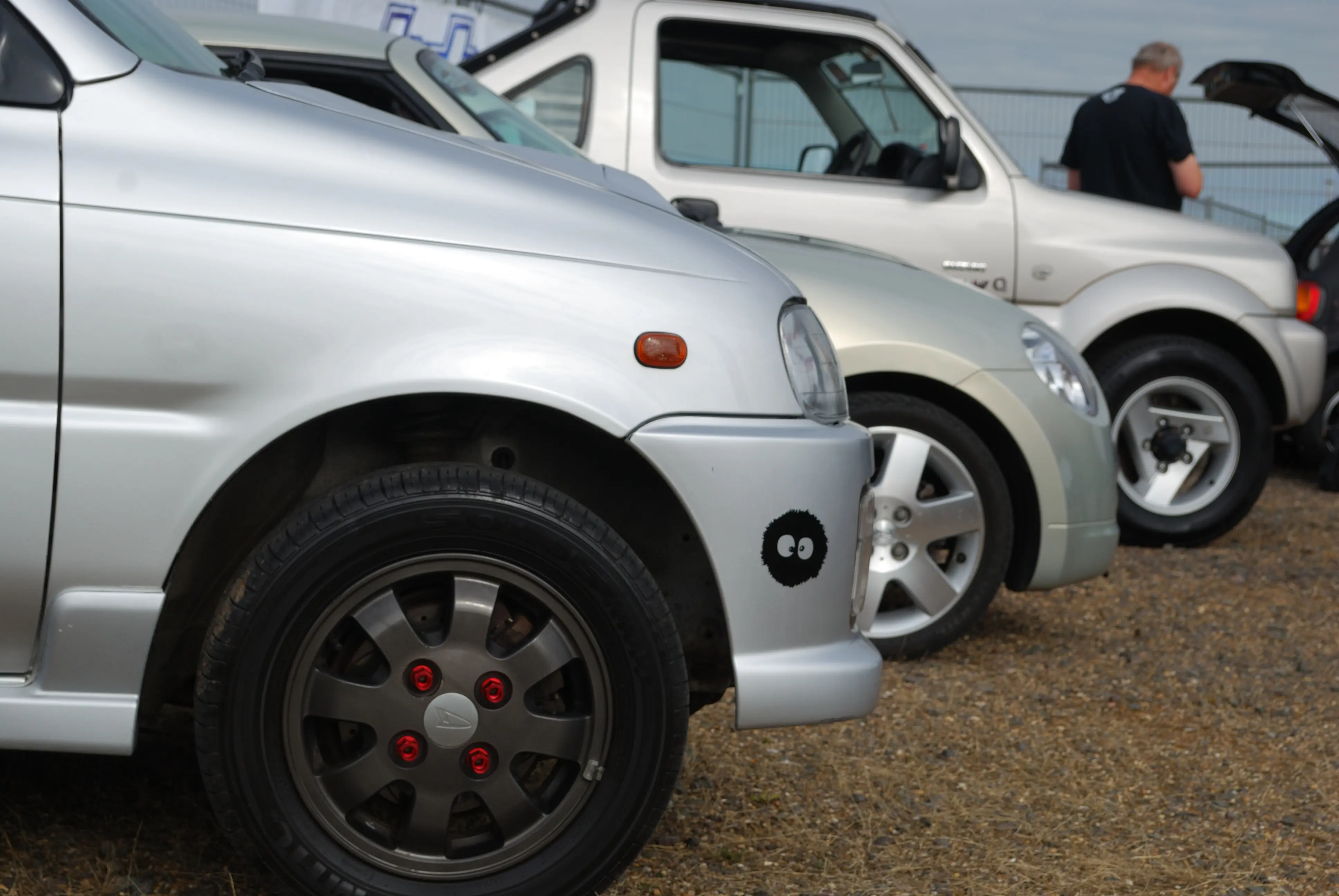
Kei cars would end up catering for almost every segment of the Japanese car market – including sports cars and off-roaders (image: JB archive).
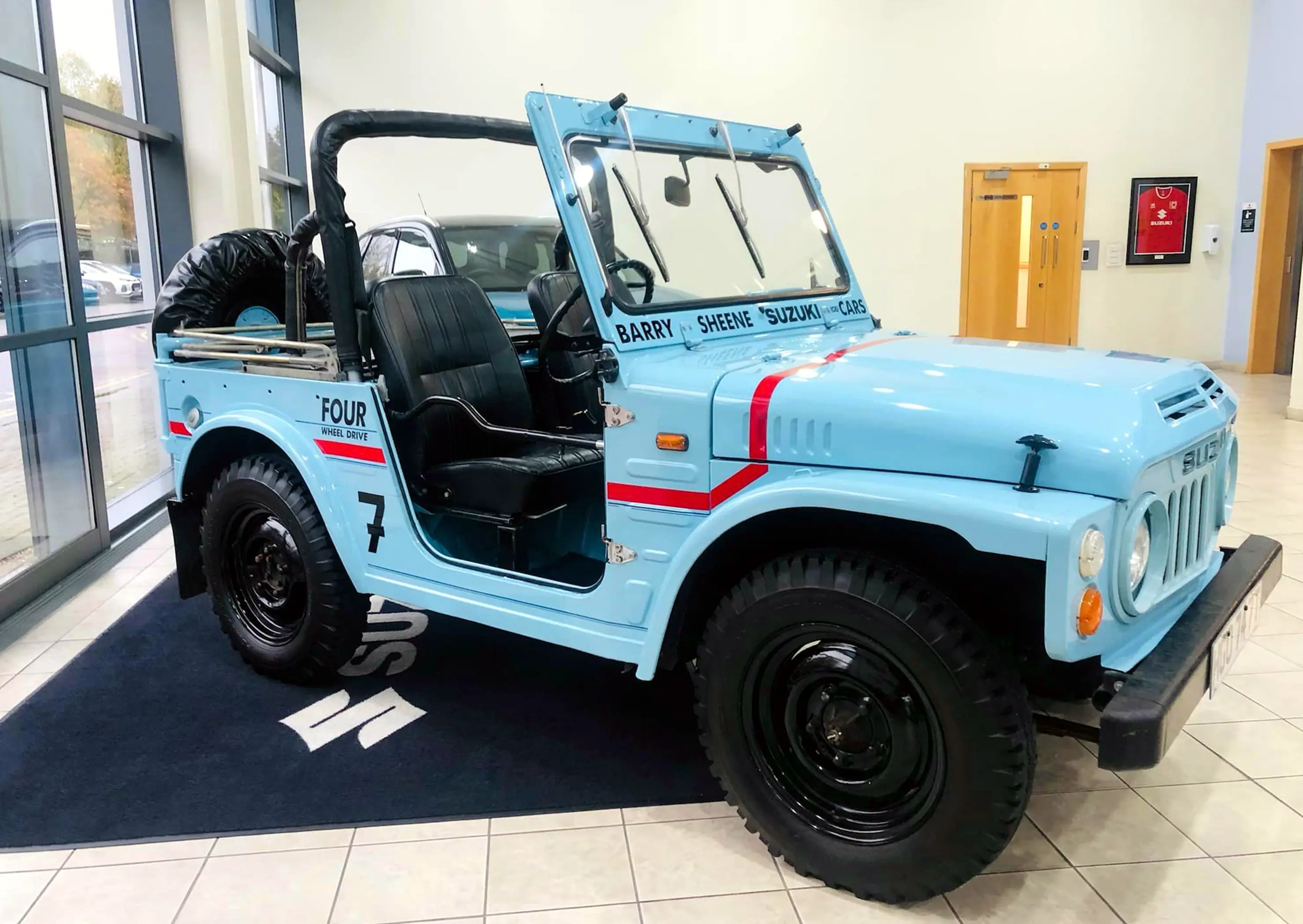
An LJ80 Jimny was built for Suzuki works motorcycle rider, Barry Sheene in 1979; it’s recently been rescued by Suzuki UK for its heritage fleet (image: Suzuki).
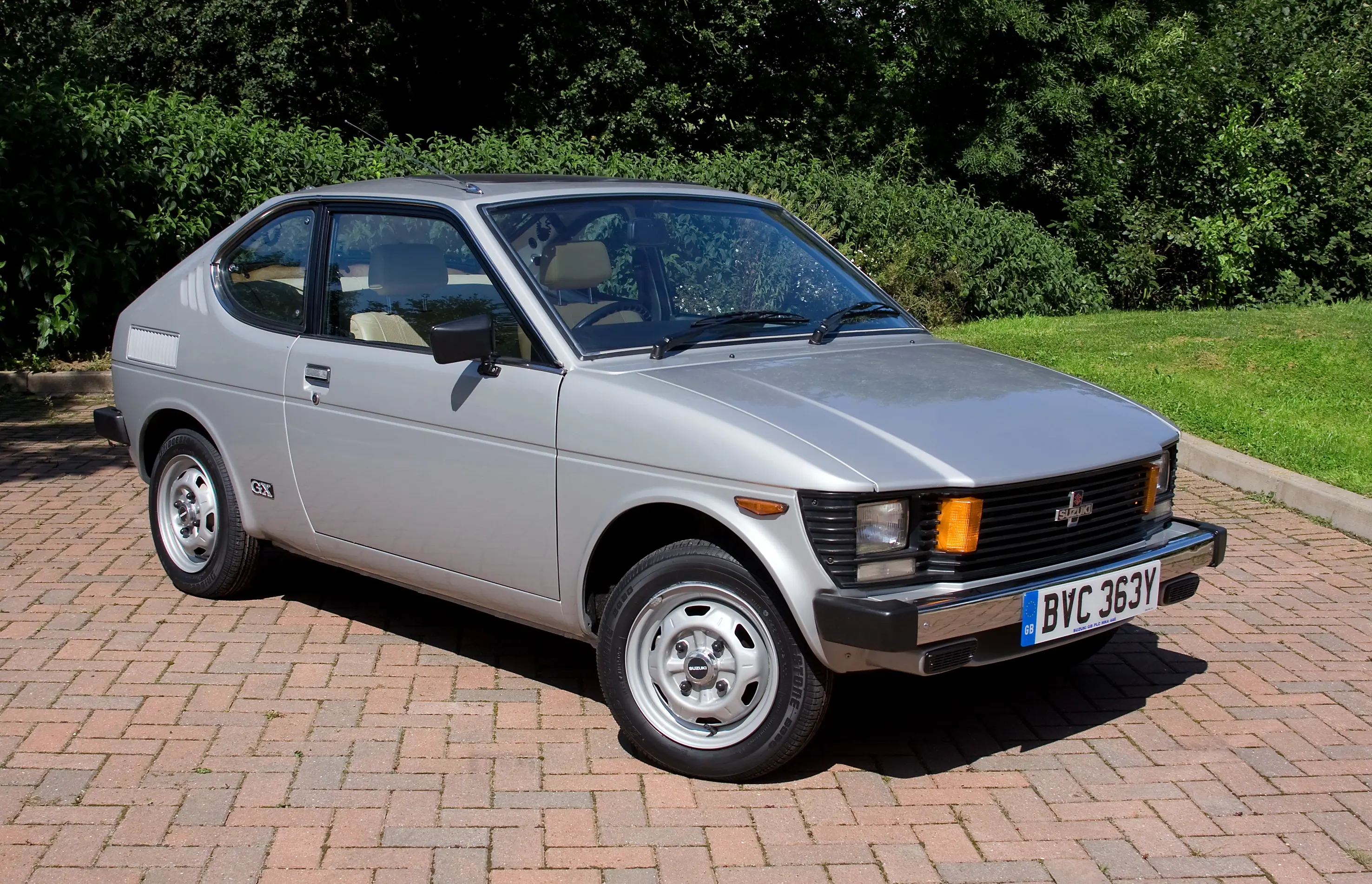
As the SC-100 ‘Whizzkid’, the rear-engined, 970cc export Cervo found favour in the UK and Europe (image: Suzuki).
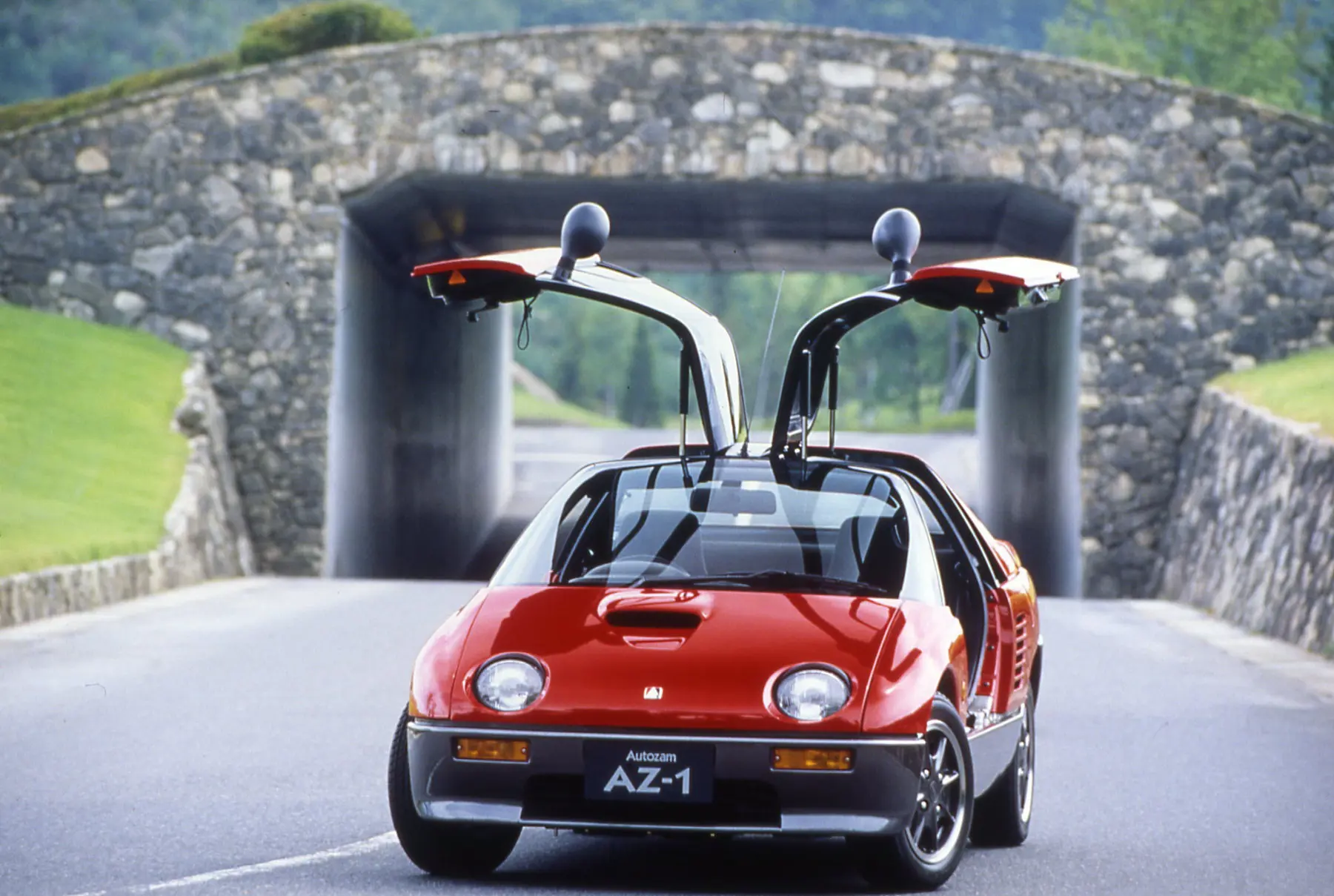 The 1992 Autozam AZ-1 was perhaps one of the most radical Kei cars released – a mid-engined, gullwing sports car (image: Mazda).
The 1992 Autozam AZ-1 was perhaps one of the most radical Kei cars released – a mid-engined, gullwing sports car (image: Mazda).
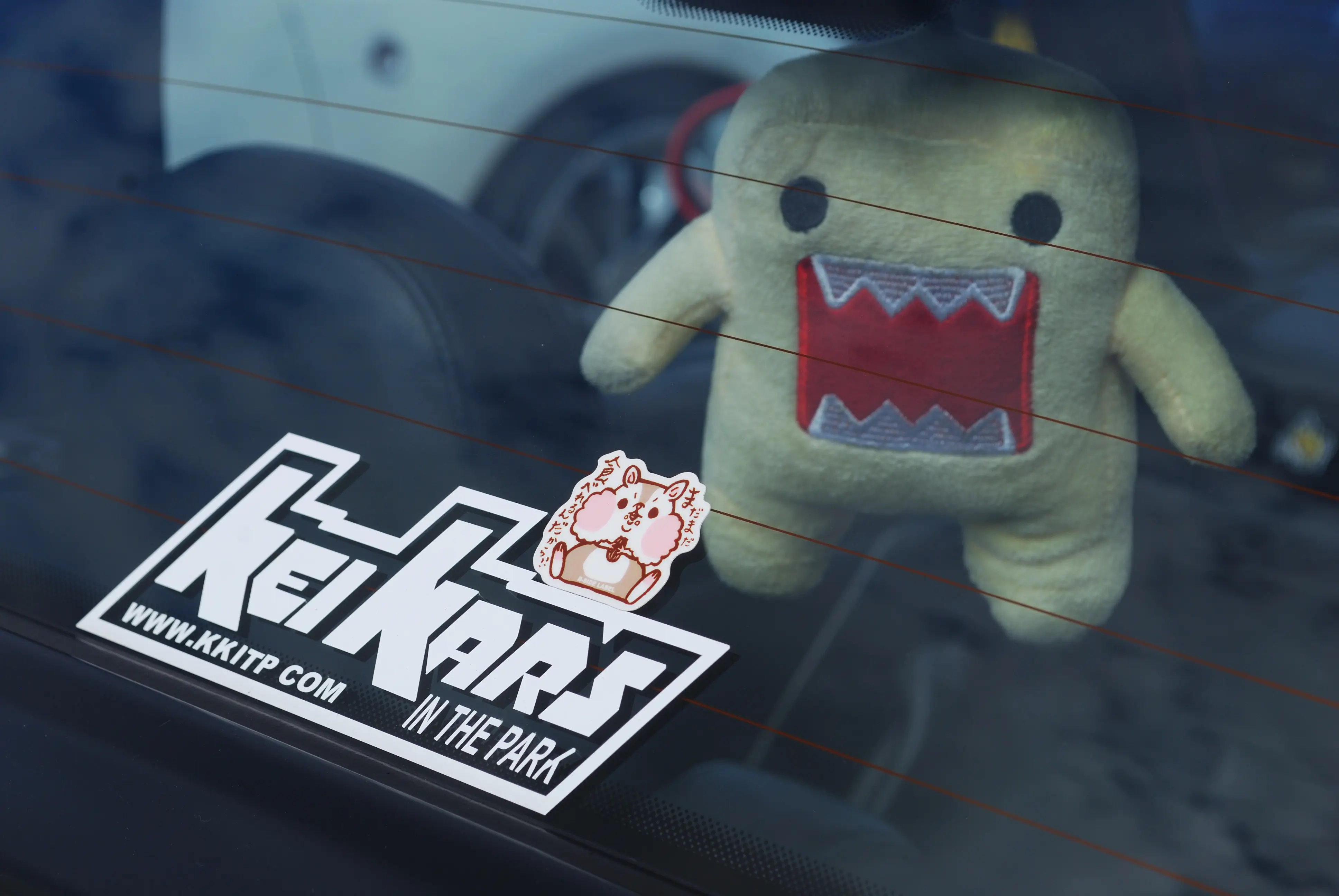
Kei Cars In The Park remains the UK’s sole Kei-only club, and can help with the translation of manuals and the importation of parts (image: JB archive).
Protect your classic vehicle with Japanese import car insurance from Lancaster Insurance, get covered today!
